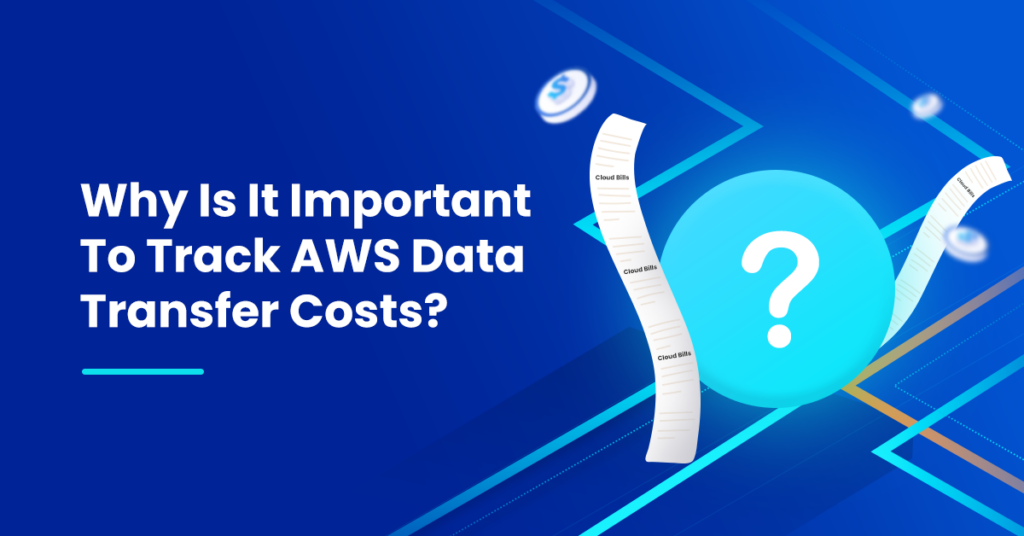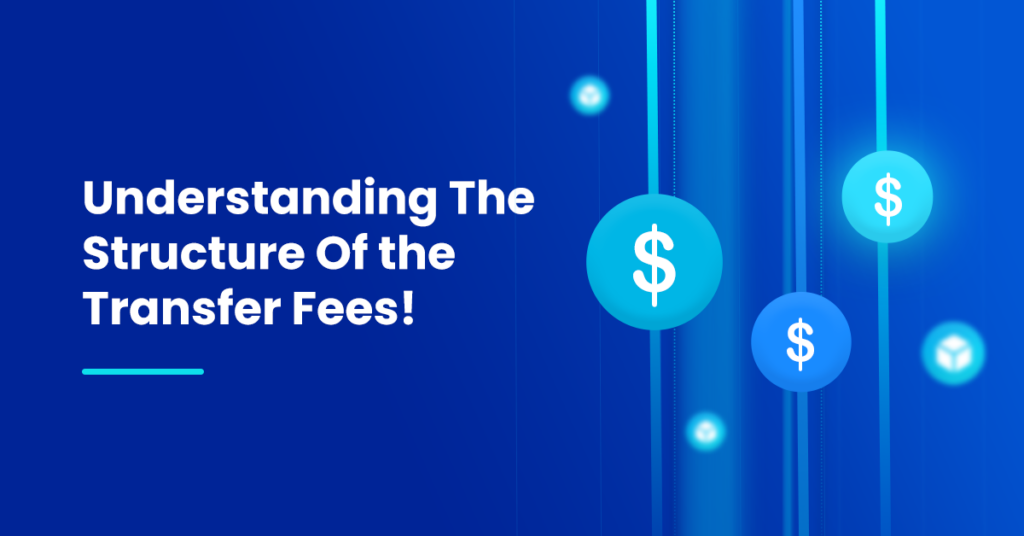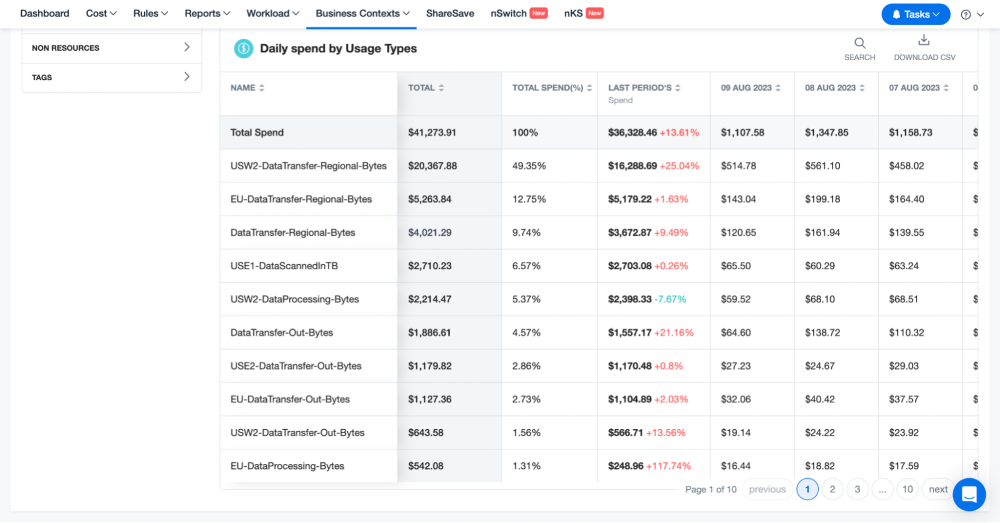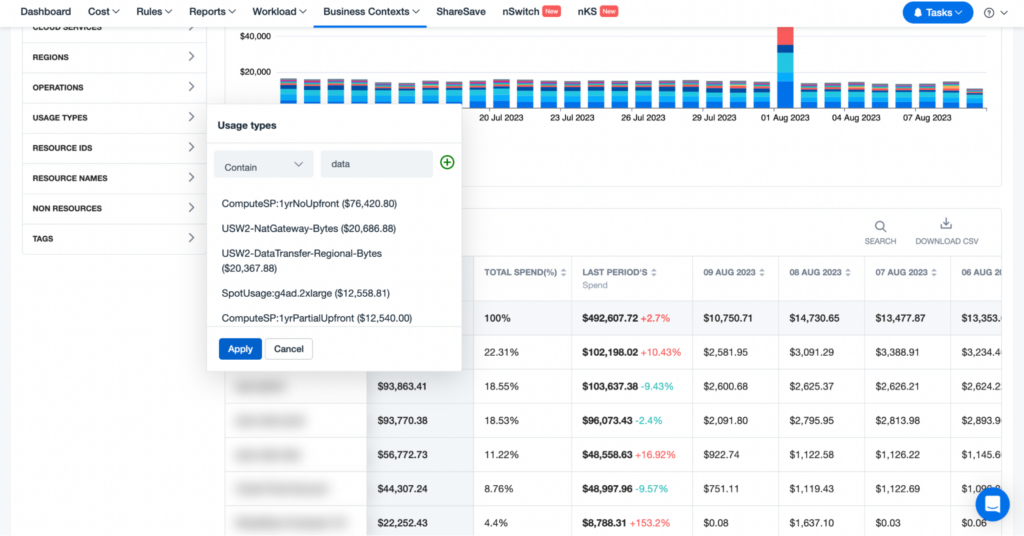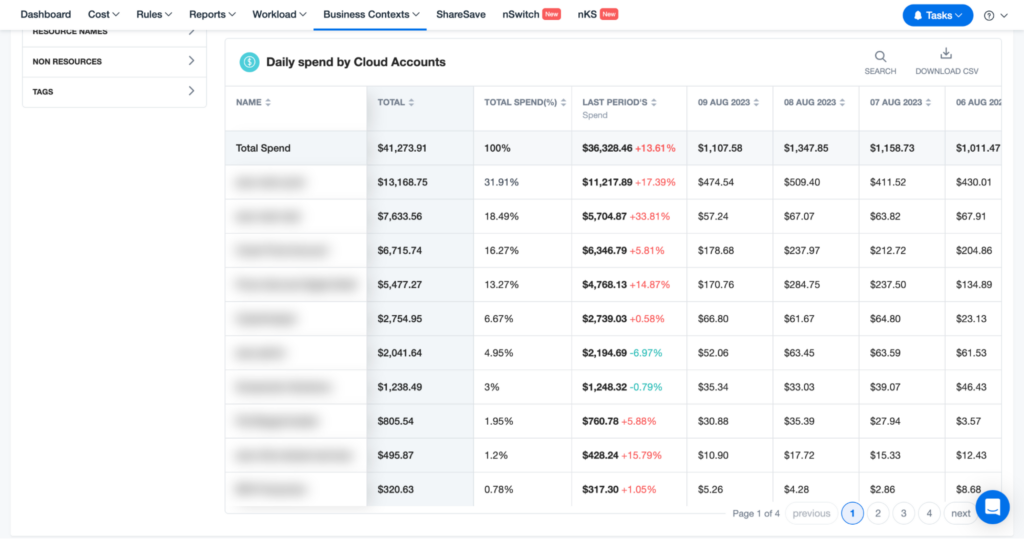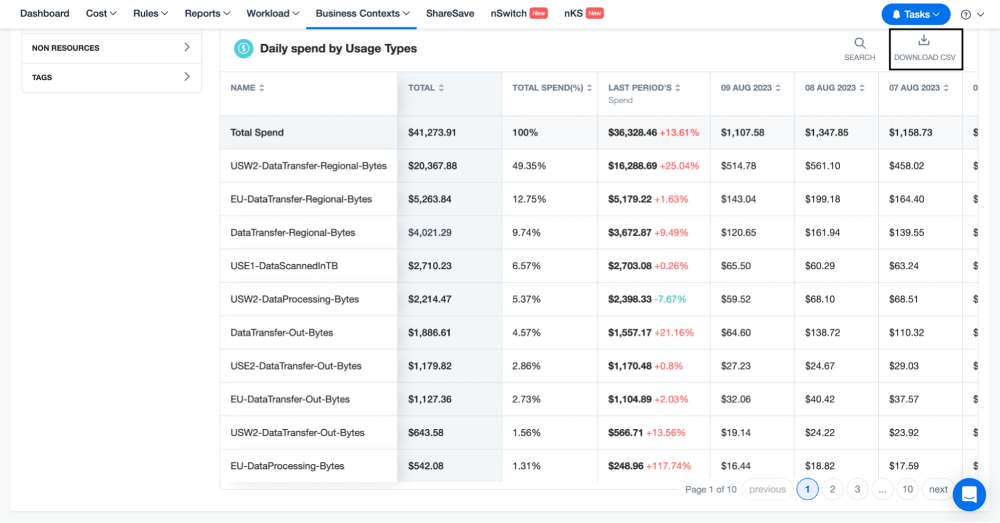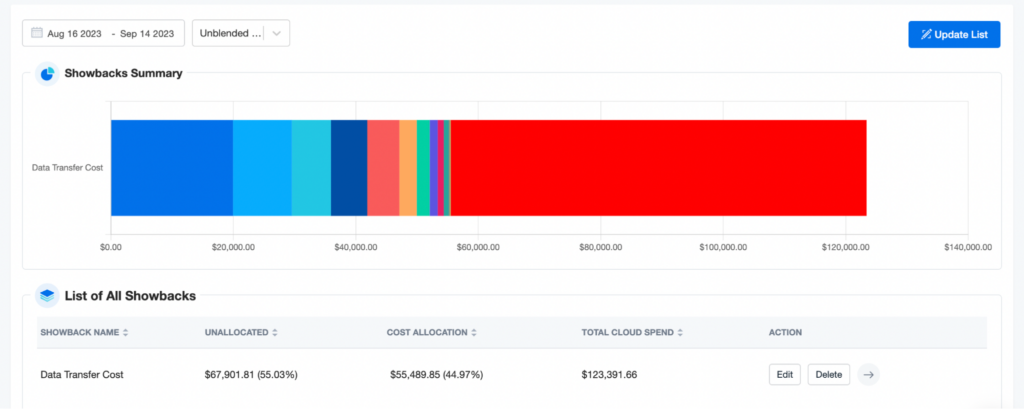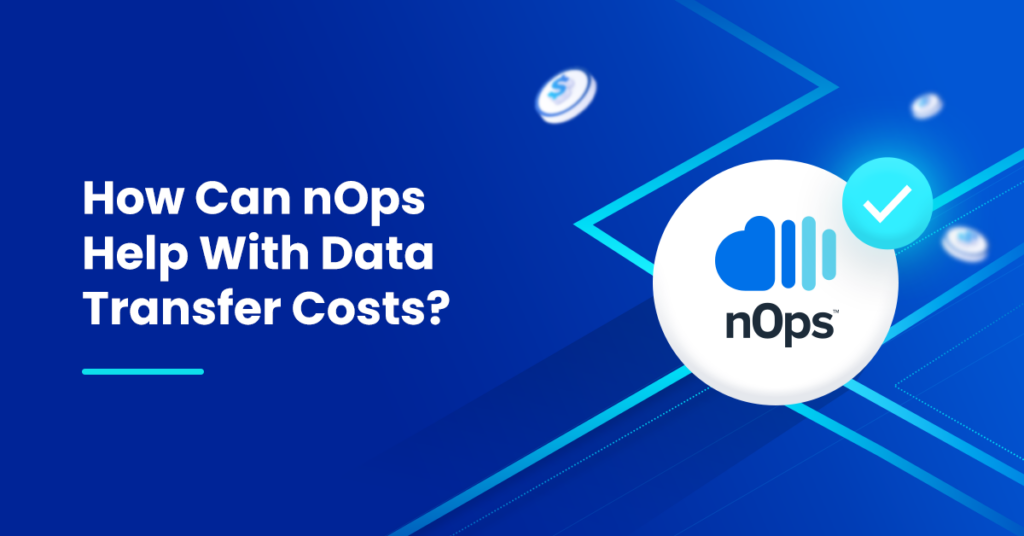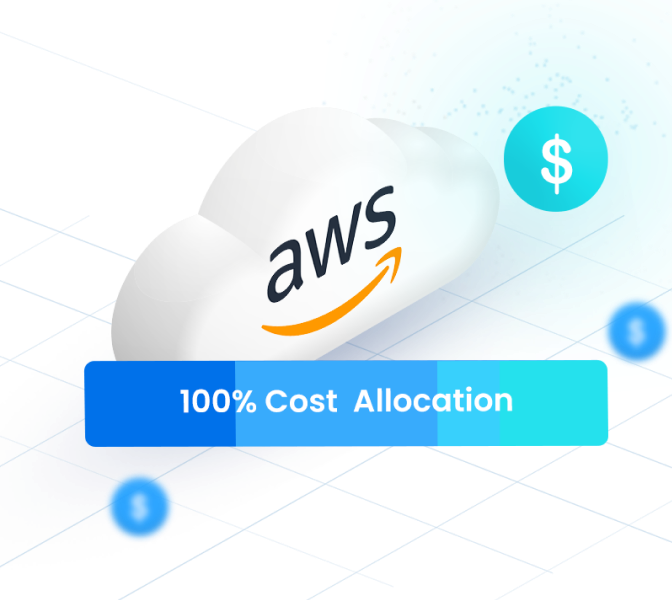- Blog
- Cost Allocation & Reporting
- AWS Data Transfer Pricing: Types, Fees, and How to Track
AWS Data Transfer Pricing: Types, Fees, and How to Track
Last Updated: May 27, 2025, Cost Allocation & Reporting
Data transfer costs in AWS can often be overlooked amidst the many other line items on your cloud bill. But if left unchecked, these costs can accumulate and can be a major cause of high AWS bills. To effectively manage and potentially reduce these costs, it’s crucial to gain a deeper understanding of your data transfer costs and see which resources are generating them. However data transfer (aka. bandwidth) costs have many dimensions. All these dimensions are charged at different rates and some costs can be avoided. For example, if you see a large InterZone-In or -Out cost on your AWS bill, there are steps you can take to reduce this bandwidth costs.
In this blog post, we’ll discuss what AWS data transfer is, why it’s important to track your data transfer costs, and how you can reduce your data transfer costs. We will cover the most common dimensions under operation.
What Are AWS Data Transfer Costs?
AWS data transfer refers to the movement of data between AWS resources and between AWS and the internet. AWS charges for data transfer based on the following factors:
- The source and destination regions
- The type of data transfer
- The amount of data transferred
AWS data transfer Cost is the cost of moving data between AWS resources and between AWS and the internet. Data transfer costs can be incurred for a variety of services, including Amazon S3, Amazon EC2, Amazon RDS, etc.
The transfer of incoming data across all services and regions is free of charge. Charges for data transfer from AWS to the internet vary depending on the originating region and are assessed per service.
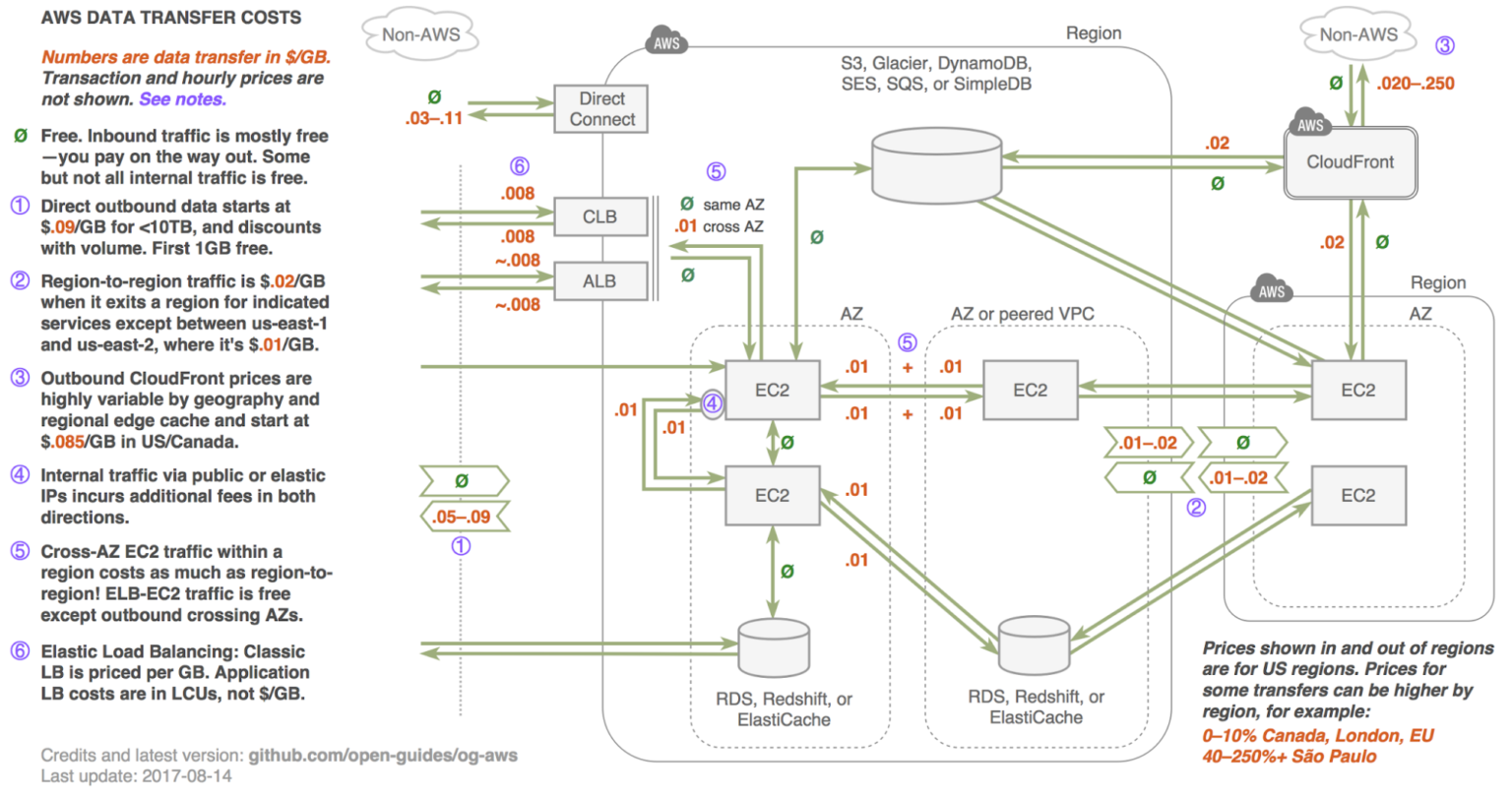
Types of AWS Data Transfer Pricing
AWS data transfer costs depend on where your data is moving and how it’s routed. Here’s a quick overview of the main types of AWS data transfers you need to know.
1. Regional Data transfers:
Fees for inter-region data transfers are based on the source region’s rates. All of the source-specific region rates can be found on the AWS website.
- Intra-region Data Transfers: AWS EC2 instance Data transfers within the same region are recognized as intra-region transfers. There are no data transfer fees when using the internet gateway to reach the public endpoint of an AWS service in the same region. But, when the same services are accessed through a NAT gateway, there is a processing fee (per gigabyte (GB)) for the data that flows through the gateway. You can access the VPC pricing details here.
- Across-region Data Transfers: There is a fee for data transfer across regions if your workload accesses services in multiple Regions. The cost is determined on the region of origin and destination.
2. Inbound Vs Outbound:
- Inbound data transfers: This is data that is transferred into AWS. For example, if you upload a file to an S3 bucket, that would be considered inbound data transfer.
- Outbound data transfers: This is data that is transferred out of AWS. For example, if you download a file from an S3 bucket, that would be considered outbound data transfer (this is also known as AWS bandwidth cost).
AWS Cloud Cost Allocation: The Complete Guide
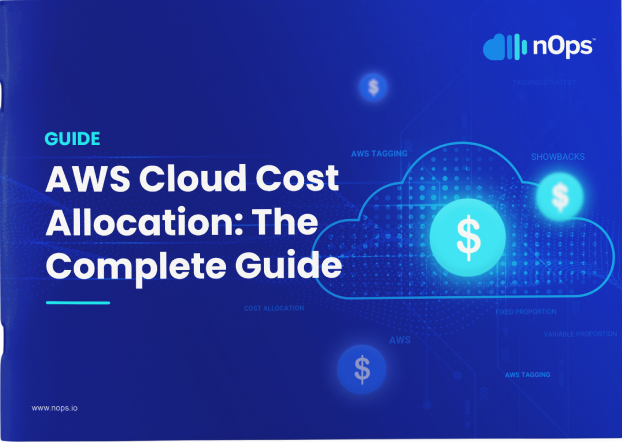
3. InterZone-In and InterZone-Out Transfers:
Data transferred “into” and “out of” the following services across Availability Zones or Amazon Virtual Private Cloud (Amazon VPC) peering connections in the same AWS Region are charged at $0.01/GB in each direction.
- Amazon EC2
- Amazon Relational Database Service (Amazon RDS)
- Amazon Redshift
- Amazon DynamoDB Accelerator (DAX),
- Amazon ElastiCache instances
- Amazon elastic network interfaces
For example, if you have an Amazon EC2 instance in one AZ and you transfer a file to an Amazon S3 bucket in a different AZ, you will be charged for the InterZone-Out operation.
Tip: To reduce InterZone data transfer costs, you can try to co-locate your resources in the same AZ. For example, if you have multiple Amazon EC2 instances that need to access the same Amazon S3 bucket, you can try to place them all in the same AZ. This will avoid the need to transfer data between AZs, which can save you money.
Why Is It Important To Track AWS Data Transfer Costs?
AWS data transfer expenses, though often overlooked, can make up a significant portion of your cloud expenditure, sometimes contributing to as much as 20% of your overall AWS bill. Given their potential impact on your bottom line, tracking these costs becomes not just beneficial, but imperative.
Here are compelling reasons to monitor your AWS data transfer costs:
- Cost Optimization: By tracking your data transfer costs, you can identify and address areas of inefficiency. This ensures that you’re only paying for what’s truly necessary and not wasting resources.
- Transparency: Without regular monitoring, hidden data transfer operations can sneak up and inflate your bill. Being aware of these allows for better budgeting and financial planning.
In essence, being proactive about AWS data transfer costs isn’t just about minimizing expenses; it’s about making informed decisions, optimizing resources, and achieving financial transparency.
How To Track Data Transfer Costs Efficiently?
While AWS Cost Explorer offers tools to monitor data transfer costs, many find the process time-consuming and challenging. This complexity can lead to unexpected and significant data transfer expenses for companies, sometimes amounting to millions annually.
To effectively manage these costs, consider two primary steps:
- Understand Transfer Fees: Get a clear understanding of how AWS charges for data transfers.
- Learn Cost-Saving Strategies: Explore best practices to manage and potentially reduce these transfer costs.
Let’s dive in.
Structure of AWS Data Transfer Fees
To optimize AWS networking costs, it’s essential to identify the resources that lead to unnecessary data transfer charges. By understanding these areas, informed architectural decisions can be made to mitigate such costs. nOps’ Cost Analysis tool offers a solution. nOps provides intuitive filters that can instantly identify areas that are generating your data transfer costs. This information can be used to allocate costs to the business units or teams that are responsible for those resources.
It provides a centralized view of your data transfer costs, so you can easily identify areas where you can reduce your costs.
nOps can help you reduce your AWS data transfer costs in a few ways:
- It can help you track your data transfer costs in a granular way. This information can be used to identify areas where you can reduce your data transfer costs.
- It can help you identify patterns in your data transfer usage, helping you reduce costs and make informed decisions.
- It can help you generate reports on your data transfer costs. These reports can be used to track your progress over time and make sure you’re on track to meet your cost reduction goals.
- nOps can help you to distribute and highlight your data transfer costs through Showback dashboards. nOps enables you to allocate the data transfer cost by adding cost allocation policies across multiple teams, projects, environment, workload types, etc. In addition to this, you can also allocate this cost across the tag keys based on fixed percentages, weighted percentages and more.
Ways to Reduce Data Transfer Cost in AWS
Reducing AWS data transfer costs often comes down to smarter routing, caching, and optimization. Here are some practical ways to lower your data transfer spend.
- Use regionalized services whenever possible. This will help you avoid cross-region data transfer costs.
- Use a content delivery network (CDN) to cache static content closer to your users. This will help you reduce the amount of data that needs to be transferred from your origin servers.
- If you have bandwidth-heavy workloads, AWS Direct Connect can reduce your network costs into and out of AWS.
- Use compression to reduce the size of your data transfers.
- Schedule your data transfers during off-peak hours to take advantage of lower rates.
- Use a bandwidth optimization tool like nOps to identify and optimize your data transfer patterns.
Common Mistakes to Avoid Increases in AWS Data Transfer Pricing
AWS data transfer costs can easily spiral if you’re not careful. Here are some of the most common mistakes that lead to unexpected charges.
- Assuming all inbound data transfer is free: While most inbound transfers are free, there are exceptions depending on services and regions.
- Overlooking inter-AZ (Availability Zone) transfer costs: Data transfer between AZs in the same region isn’t free and can add up quickly for highly available architectures.
- Underestimating CloudFront costs: While CloudFront reduces origin traffic, outbound traffic from CloudFront itself still incurs charges that can grow with usage.
- Ignoring data transfer costs in serverless architectures: Serverless functions like AWS Lambda can still generate VPC data transfer charges, especially when accessing services across AZs or regions.
- Not accounting for NAT Gateway data processing charges: Traffic through NAT Gateways incurs both a data processing fee and a per-GB data transfer fee.
- Using cross-region services without optimization: Unoptimized cross-region communication (like cross-region replication in S3 or RDS read replicas) can rack up significant transfer fees.
- Failing to monitor Direct Connect or VPN data costs: Misconfigured or underutilized Direct Connect or VPN links can lead to inefficient data transfer billing.
Manage AWS Data Transfer Pricing using nOps
nOps offers a centralized platform for managing your AWS infrastructure and monitoring all AWS resources. It’s easy to see historical cloud billing data in interactive and visual dashboards instead of reviewing thousands of rows of data.
The tool’s intuitive filters allow you to group resources into meaningful categories so you can more easily identify patterns, unnecessary expenses, and act on reducing cloud costs. For in-depth insights, users can analyze costs on an hourly basis across all dimensions that contribute to spending, whether at the account, service, or resource level. This makes it easy to investigate, understand, predict and lower data transfer and other AWS costs.
nOps is on a mission to empower engineers to more easily take action on cost optimization. We’re entrusted with over 2 billion dollars of AWS spend, and were recently ranked #1 in G2’s cloud cost management category.
Learn more about the nOps cloud optimization platform by booking a demo today!
Frequently Asked Questions
How much does data transfer cost in AWS?
AWS data transfer costs vary depending on direction and source. Inbound data transfer (into AWS) is typically free. Outbound data transfer (out to the internet) starts around $0.09/GB for the first 10 TB per month and decreases with higher usage tiers. Data transfer between services within the same Availability Zone is usually free, but cross-AZ transfer costs about $0.01/GB. Cross-region transfers are more expensive, averaging around $0.02–$0.05/GB depending on regions.
How much does AWS data transfer cost between accounts?
If two accounts share the same VPC using VPC sharing, data transfer within the same Availability Zone is free. If you use VPC peering across different accounts, you typically pay about $0.01/GB for inter-AZ data and $0.02–$0.05/GB for cross-region traffic. Data transfer between accounts that’s routed over the internet (public endpoints) will cost standard internet egress rates starting around $0.09/GB. Structuring accounts with resource sharing, PrivateLink, or Transit Gateway can help minimize cross-account transfer costs when designing multi-account architectures.
How much does AWS Direct Connect data transfer cost?
With AWS Direct Connect, inbound data transfer into AWS is typically free, while outbound data transfer rates are lower compared to internet-based transfer. Direct Connect outbound data transfer pricing usually ranges from $0.02/GB to $0.06/GB depending on location and connection type (Dedicated vs. Hosted). Additional hourly port charges apply based on the connection capacity, such as $0.25/hour for a 1 Gbps dedicated connection. Choosing Direct Connect makes sense when you expect consistent, high-volume traffic and want predictable, discounted rates compared to public internet transfer.
How much does it cost to export data from AWS?
Exporting data from AWS typically means internet egress charges. The cost starts at around $0.09/GB for the first 10 TB per month, with lower rates for higher usage tiers. Services like Amazon S3 offer cheaper rates for data retrieval within AWS but still charge full egress rates when exporting data outside AWS. If you’re using services like AWS Snowball or Snowmobile for large data exports, you pay a flat device fee plus shipping, and data transfer costs are often bundled. Always factor both per-GB fees and potential retrieval fees.



